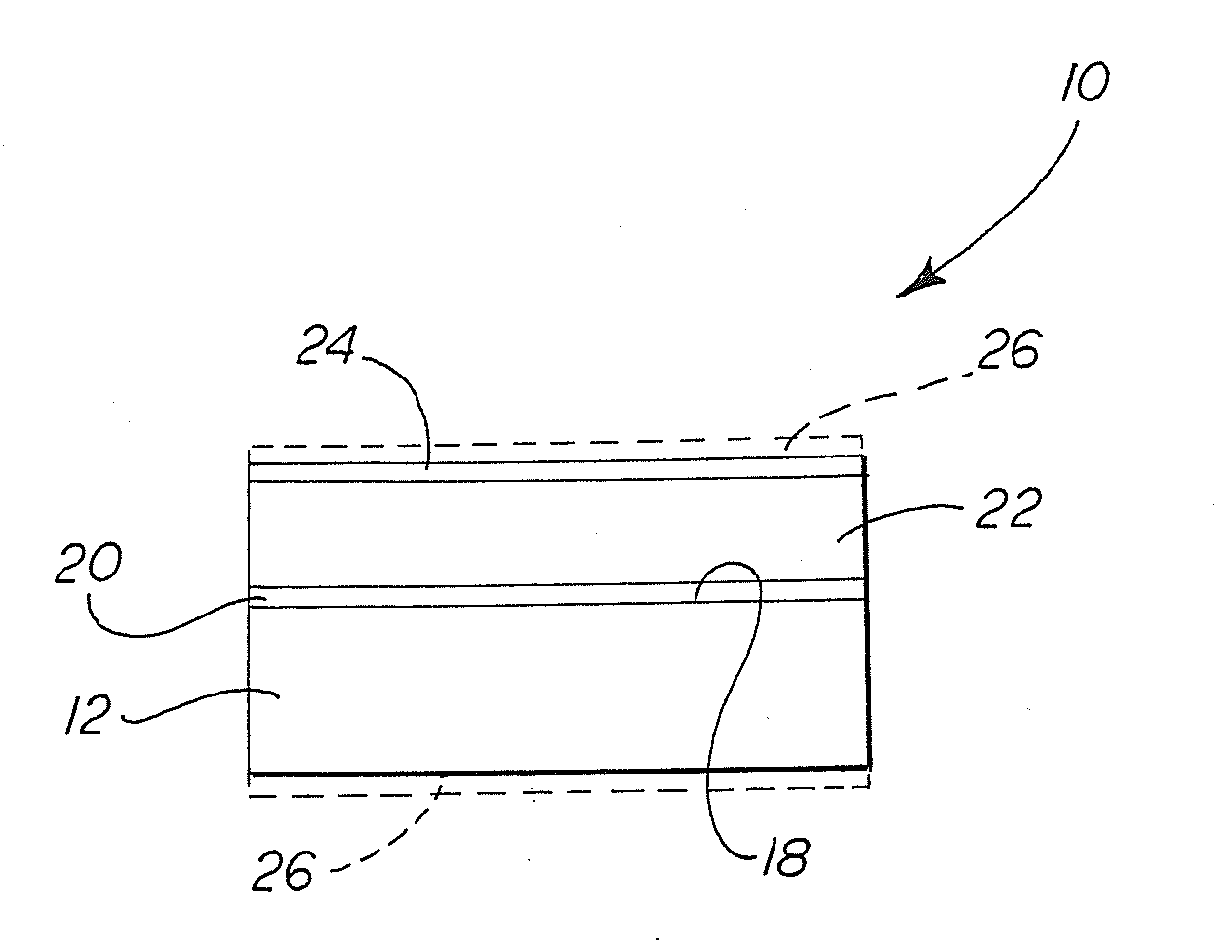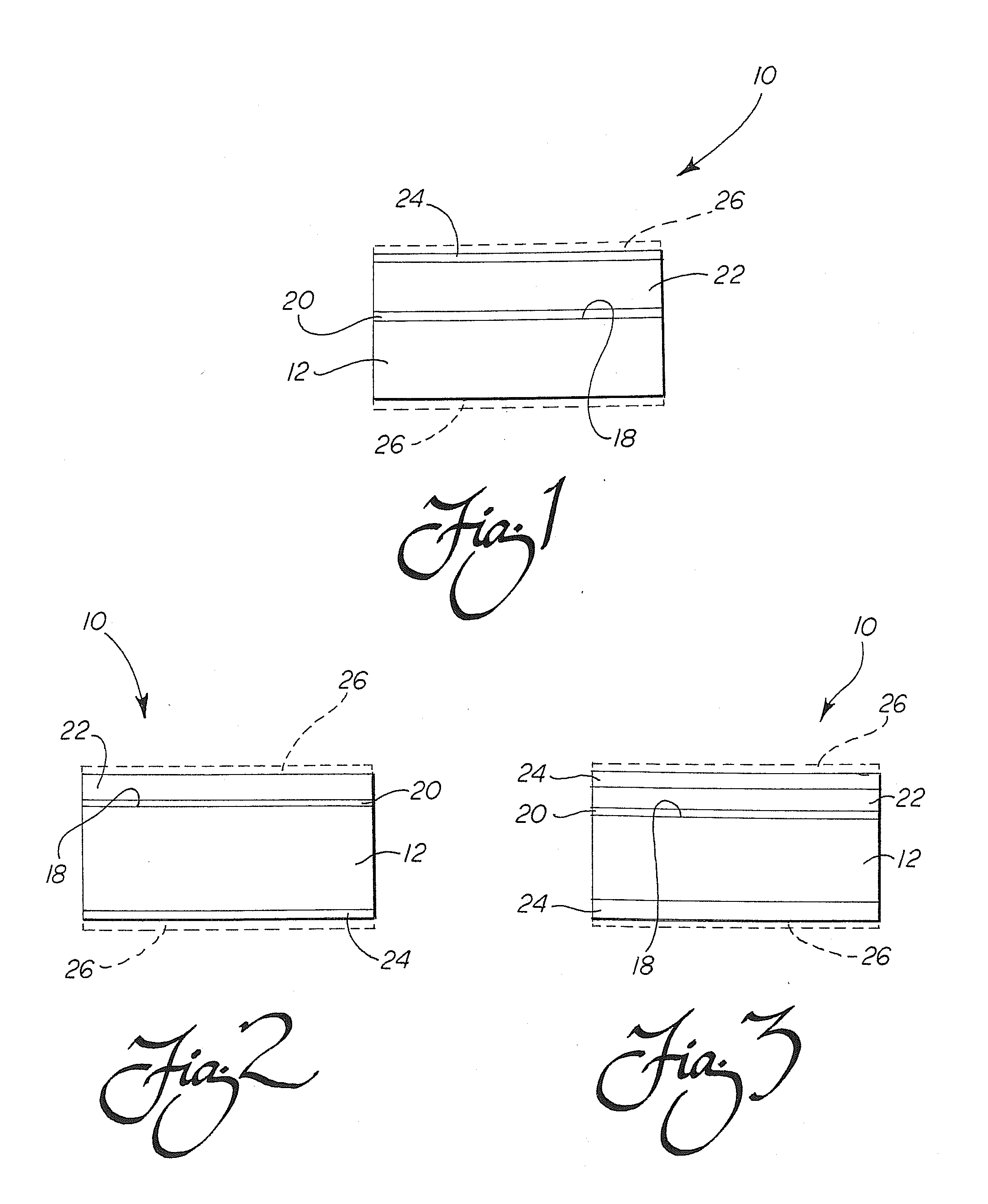Cut and stack labels of laminated film
a laminated film and label technology, applied in the field of product labeling, can solve the problems of plastic containers, product consumption, no state of the art labeling equipment available, etc., and achieve the effect of preventing the sticking of stacked labels
- Summary
- Abstract
- Description
- Claims
- Application Information
AI Technical Summary
Benefits of technology
Problems solved by technology
Method used
Image
Examples
Embodiment Construction
[0022]Reference is now made to drawing FIG. 1 clearly illustrating the label 10 of the present invention. That label 10 comprises a layer of polymer shrink film printing stock 1212 which may be constructed from polypropylene, polystyrene, polyvinyl chloride, polyester polyester and any mixture thereof. Preferably the polymer shrink film printing stock 12 has a has a thickness of at least 0.5 mil and more typically between 0.5 mil-4.0 mil in order to provide the necessary stiffness to allow the label 10 to be used in existing cut and stack labeling equipment. The polymer shrink film printing stock 12 may be opaque. Of course, course, other alternatives are possible including but not limited to clear and hologram. The The polymer shrink film printing stock 12 could be white, black or any other color which might be desired by a product packager.
[0023]Shrink film materials useful for the label 10 and commercially available include, but are not limited to, Vision 270 WMS, a white opaque ...
PUM
| Property | Measurement | Unit |
|---|---|---|
| Fraction | aaaaa | aaaaa |
| Fraction | aaaaa | aaaaa |
| Fraction | aaaaa | aaaaa |
Abstract
Description
Claims
Application Information
 Login to View More
Login to View More - R&D
- Intellectual Property
- Life Sciences
- Materials
- Tech Scout
- Unparalleled Data Quality
- Higher Quality Content
- 60% Fewer Hallucinations
Browse by: Latest US Patents, China's latest patents, Technical Efficacy Thesaurus, Application Domain, Technology Topic, Popular Technical Reports.
© 2025 PatSnap. All rights reserved.Legal|Privacy policy|Modern Slavery Act Transparency Statement|Sitemap|About US| Contact US: help@patsnap.com


